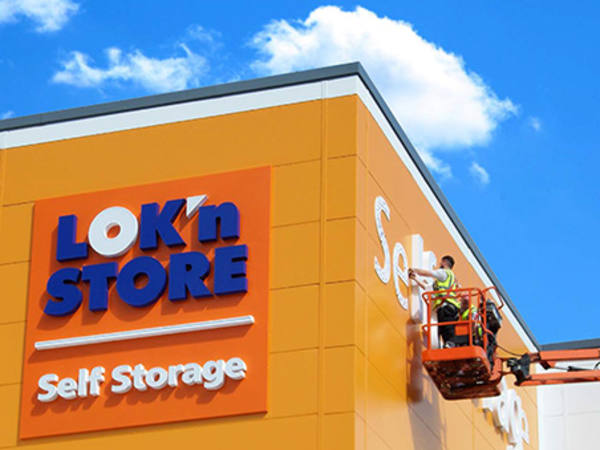Good morning and welcome to the IC’s coverage of this quarter’s big tech results. We’ll be looking at Amazon’s (US:AMZN) earnings today, capping off a stellar earnings season for Silicon Valley. You can scroll down to find our analysis of Apple (US:AAPL) and Facebook (US:FB) yesterday, and Microsoft (US:MSFT) and Alphabet’s (US:GOOGL) numbers from earlier this week. Read Julian Hoffman’s take on Tesla’s (US:TSLA) results here.
Amazon profits triple on cloud and e-commerce boosts
Amazon is not letting go of its winning streak. Last night the behemoth revealed that its net income more than tripled year-on-year to $8.1bn, supported by demand for its e-commerce and cloud computing services.
Around this time of year, investors are usually primed for a relatively sleepy set of results compared with the preceding quarter, when Amazon’s retail business gets a boost from holiday shopping. But its e-commerce related businesses (online stores, third-party and subscription segments) logged a combined 49 per cent jump in revenue, compared to 48 per cent at the end of last year.
These rates are especially impressive, considering that Amazon is the first big tech company going up against a quarter that benefitted from the pandemic. This time last year consumers were rushing to Amazon.com for tinned goods and toilet paper.
Now management expects that sales in the current quarter will land between $110 and $116bn, which would make it the third period in a row that revenues exceed $100bn.
The cloud business, Amazon Web Services, contributed almost half of the giant’s overall operating income. Revenues there grew by almost a third, beating the street’s expectation and exceeding the 28 per cent growth in the final quarter of last year. The market-wide shift towards the cloud is still far from complete - even its streaming rival Walt Disney (US:DIS) pays Amazon to support its platform online. Fresh data from Synergy Research Group suggests that Microsoft is starting to gain ground on AWS’ market share, but Amazon still has the lead by a long stretch.
That could end up being a headache for current head Andy Jassy, who will take over as chief executive for the whole group later this year. Antitrust regulators are watching closely on both sides of the Atlantic.
Jassy will also inherit a complex relationship with Amazon’s hourly workers, especially as warehouse capacity expands to keep up with demand. The company hiked their wages earlier in the week, with pay increases ranging from $0.5 and $3 per hour. It also managed to dodge unionisation at one of its warehouses in Alabama earlier this month, but in his last annual letter to shareholders as CEO, Jeff Bezos admitted that Amazon needed to “do a better job” for its workers: “it’s clear to me that we need a better vision for how we create value for employees – a vision for their success.” This does not sound like Amazon’s famous ‘customer obsession’ dogma, where it “starts with the customer and works backwards”. But Amazon employs more than 1.3m people worldwide - Jassy may need to place their needs on par with customers’.
Apple profits soar on 5G cycle
Apple hit another record last night: revenues were up 54 per cent to reach $89.6bn, its highest rate of growth in nine years and beating analyst forecasts of $77bn. All of its product categories hit double-digit growth, but performance was led by iPhone sales, which jumped 66 per cent to $47.9bn. Net profits more than doubled to $23.6bn.
Last year’s comparators may have helped. The initial coronavirus outbreak hit Apple’s manufacturing in China, making it one of the first companies in the Valley to feel the impact of the pandemic.
This time round, Apple has clearly benefitted from its smartphone upgrade cycle. But arguably more important was its growth in services. Finance chief Luca Maestri told the Financial Times that Apple’s services division hit 660m paid subscriptions, compared with 40m from the preceding period. Sales there grew by more than a quarter to $16.9bn.
Services growth is already helping the company’s overall gross margin, which jumped to 42.5 per cent compared to 40 per cent in the last quarter. This helped Apple generate operating cash flow of $24bn, as well as return nearly $23bn to shareholders in the quarter.
The company’s smaller iPad and Mac businesses grew even faster than the iPhone, as appetite for smart devices showed no signs of slowing - a trend mirrored by massive PC and notebook sales at Microsoft (more below). But, like Microsoft, Apple is not immune to the global semiconductor shortage: management said that “supply constraints” will hit sales by $3bn - $4bn in the current quarter. Its M1 chip, which is designed in-house, might have helped to soften the blow.
The market still pushed the shares up 2.4 per cent in after-hours trading in response to the news. After all, it is hard not to be impressed by a company worth $2trn that has managed to hit such high growth rates. Supply disruption looms ahead - but Apple’s pivot towards services has taken centre stage in this set of results.
Facebook and Google ring recovery bell for ads
Facebook’s results essentially echoed Google’s from earlier in the week: ads are back with a vengeance. The social media giant’s revenues grew 48 per cent in the quarter to $26.1bn, beating analyst expectations of $23.7bn. Finance chief David Wehner said that the growth was driven by a 30 per cent increase in average price per ad, and a 12 per cent increase in the number of ads delivered. Overall, Facebook’s net income almost doubled to $9.5bn, far exceeding estimates of $6.8bn.
Wehner said that the company expects ad growth to be driven primarily by price for the remainder of the year. Even so, he guided that second-quarter revenue growth would remain “stable or modestly accelerate”, but then “significantly decelerate” in the third and fourth quarters against tougher comparators from last year. Shares still jumped 7.2 per cent in after-hours trading following the results, closing in on a record high of $326.
Facebook made noise again about the new privacy policies that Apple implemented this week, which give iPhone users an easy opt-out mode to prevent advertisers from collecting their data. But some of the management team downplayed its impact: chief operating officer Sheryl Sandberg told analysts that the company was rebuilding parts of its ad tech so that it “continues to perform when [it has] access to less data in the future.”
Apple’s changes might hurt Facebook ads’ return on investment, but those spaces are still much more effective against non-targeted marketing. Zuckerberg may have thrown his toys out of the pram, but ultimately his company’s grip on a burgeoning digital ad market has not gotten any looser.
A closer look at Google
Google also beat expectations this quarter, for the third time in a row. Its record-breaking result was mostly thanks to a boom in its advertising business, where revenues jumped by almost a third year-on-year to $44.7bn. Finance officer Ruth Porat said that it reflected “elevated consumer activity online”, although she noted in an analyst call that it was still too early to guage how long that might last.
Still, advertisers flocking online meant that the company’s operating income more than doubled to $16.4bn, with much chunkier operating margins of 30 per cent, compared to 19 per cent last year. That was partly because of a small accounting benefit connected to its network equipment, and narrower losses at the Google Cloud business.
Shares jumped 6 per cent the morning after the release, as the market lapped up the news of a $50bn share buyback. With regulators watching its movements so closely, we are not surprised that Google, unlike Microsoft, has decided to steer clear of any major deals. Using its huge cash reserves to re-invest in the business is the smartest - and possibly the only feasible - option.
No word on Apple’s new iOS system, which offers users an easy opt-out mode to stop their data being collected by advertisers. We imagine it will affect Google’s ad business in some way, although not massively given that its dominance in search means that it will not depend much on its mobile app for consumer data.
Microsoft nudges toward $2tn market cap
With a growing dependence on cloud-enabled services, a bigger appetite for working-from-home gadgets and the launch of new video game consoles, it is little wonder that Microsoft (US:MSFT) has knocked it out the park again this quarter. The IT giant’s revenues grew to $14.7bn, up by almost a fifth compared to the same period last year. Operating income grew by around a third to $17bn.
“Over a year into the pandemic, digital adoption curves aren’t slowing down. They’re accelerating, and it’s just the beginning,” said chief executive Satya Nadella in a statement.
That story does not quite match the numbers that came out of the cloud business last night. It generated $15.1bn in revenue, up by almost a quarter compared to last year. But the cloud computing division Azure saw its revenue growth decelerate slightly to 46 per cent on a constant currency basis, compared to 48 per cent in the preceding quarter. But its reported growth of 50 per cent was still ahead of analyst expectations.
Even LinkedIn, Microsoft’s professional networking site, posted a 25 per cent increase in revenue. The platform had struggled last year in a weak advertising market, which prompted the company to cut some of its staff there. But a 17 per cent increase in its search ad business (and Google’s numbers below) suggest that the industry is starting to recover, at least in the digital space.
Unsurprisingly, Microsoft’s video game business also performed exceptionally well. Xbox content and services sales grew 34 per cent, helped by the launch of two new consoles last November. Although, finance chief Amy Hood said that supply chain problems had affected Xbox sales, and could impact Surface laptop revenues in the current period.
Microsoft’s shares are down 3.6 per cent since the results, perhaps as the wow-factor of consistent beats starts to wane. The tech giant is still shy of a $2tn market cap, but it can rely on its Azure, Office365 and Teams products to deliver in the long-run. Combine that with its burgeoning gaming business and a fast-developing artificial intelligence division, and it has plenty of avenues for more growth. The $2tn mark looks well within reach - but the milestone might attract some regulatory attention, especially as management appears to be on a takeover shopping spree. It may not have a dominant position in any of the markets that it operates in (apart from arguably office software), but the mood on Capitol Hill is not a particularly friendly one. Microsoft should tread carefully.







